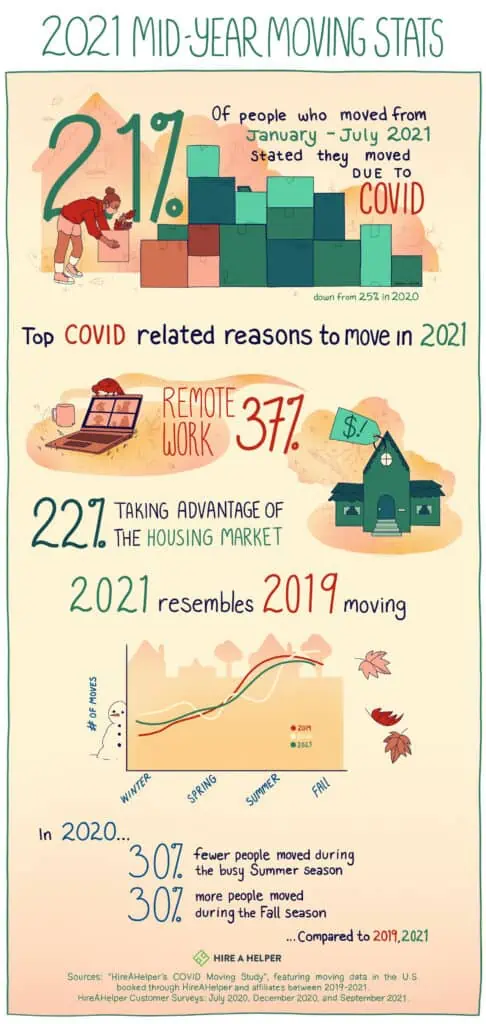Key Findings
- Well over half (61%) of America’s “small towns” (<10,000 in population) have seen a drop in population since 2010
- 82% of larger cities with >100,000 people saw their population increase over the same time period
- Three towns with registered residents in 2010 declined to a population of 0: Mustang, TX, South Park View, SD, and Hoot Owl, OK
- 39 American towns have fewer than 10 residents, according to the most recent population estimates
- Corning, MO had the greatest percentage drop in population (-93%, 15 people in 2010, just 1 person in 2022)

In other words, are there places where people once lived, but today lack any citizens? In fact, three places in America have become ghost towns since 2010, and another 39 saw their population dip to below 10 people, according to the latest population estimates by the U.S. Census Bureau.
And these aren’t just outliers, but the mark of a trend. In America, as of 2010, 61% of towns with fewer than 10,000 residents have had a population decline. (Meanwhile, 82% of cities with at least 100,000 residents had increased their population during that same time period.)
Given this asymmetrical growth and decline, we are taking a closer look at America’s smallest cities, towns and communities to see what may have contributed to their decline, as well as highlight the fastest-emptying towns for every state.
Three New Ghost Towns, More in the Making: America’s Smallest Towns
Three towns have officially reached a population of 0 as per the most recent Census estimates. They are Hoot Owl, Oklahoma, South Park View, Kentucky, and Mustang, Texas.
While Hoot Owl, OK and Mustang, TX were incorporated with a very specific purpose (to prevent trespassing and to sell alcohol, respectively), South Park View, KY actually began as a “proper” town in 1961.
“As many as 92 towns in the United States have lost at least 50% of their population since 2010.”
After reaching a population of 196 in 2000, the town’s growth was hampered by the expansion of the Louisville International Airport, leading to serious noise pollution in the area. This development led most residents to relocate, leading the town to become virtually empty.
Apart from these three towns that have ceased to exist, a further 39 are close to disappearing off the map. Of these small towns, 32 have declined in population since 2010, with just five seeing an uptick in the number of residents.
Check out this interactive map to see the locations of America’s smallest towns.
Most of these almost-ghost towns are scattered around states in the middle of the country, forming a belt pattern from North Dakota to Oklahoma. North Dakota and South Dakota alone account for 15 of America’s towns which house fewer than 10 people. Six more such places exist in Missouri, while Oklahoma currently has five.
Disappearing Fast: Towns With the Biggest Percent Declines in Population Since 2010
As many as 92 towns in the United States have lost at least 50% of their population since 2010.
Leaving aside the towns where the population has officially gone to 0, the town with the steepest drop in population by percentage is Corning, MO (-93%), which by the books only has one official resident remaining, compared to 15 residents in 2010.
“…the town with the steepest drop in population by percentage is Corning, MO (-93%), which by the books only has one official resident remaining, compared to 15 residents in 2010.”
Why are people leaving these places?
Put simply, “fewer births, more deaths, and more people leaving than moving in” are key factors in population decline in rural areas, according to a 2022 study from the University of New Hampshire.
Researchers at the University of Wisconsin point to the lack of housing in small towns, while an economist at Iowa State University highlights that bigger cities continue to have more and better-paying jobs, making small towns lose out in comparison.
To see all the towns and cities that lost at least 50% of their population since 2010, have a look at our interactive map. You can also see which town or city saw the highest percentage decline in population in your state by toggling “In Each State” on the interactive map.
See For Yourself: What Does Population Decline Actually Look Like?
Using statistics to describe cities, towns, and communities that see a decline in population is important, but numbers alone don’t tell the whole story.
Losing a significant share of the population has a tangible impact on a town, especially if it wasn’t that big to begin with. To capture some of those visible changes we used Google Street View to create visual comparison sliders.
Granted, these are only singular street corners that may or may not capture the essence of a given town. Still, there is something eerie and unsettling about seeing such dramatic changes in these small towns that are similarly reflected throughout different parts of the country. Which town will cease to exist next?




 Of course, much of the impact of the pandemic was related to the virus itself, and the safety concerns it introduced. Among those surveyed who moved due to COVID in 2020, 13% reported being spurred on by feeling unsafe in their current locations due to the spread of COVID.
Of course, much of the impact of the pandemic was related to the virus itself, and the safety concerns it introduced. Among those surveyed who moved due to COVID in 2020, 13% reported being spurred on by feeling unsafe in their current locations due to the spread of COVID.